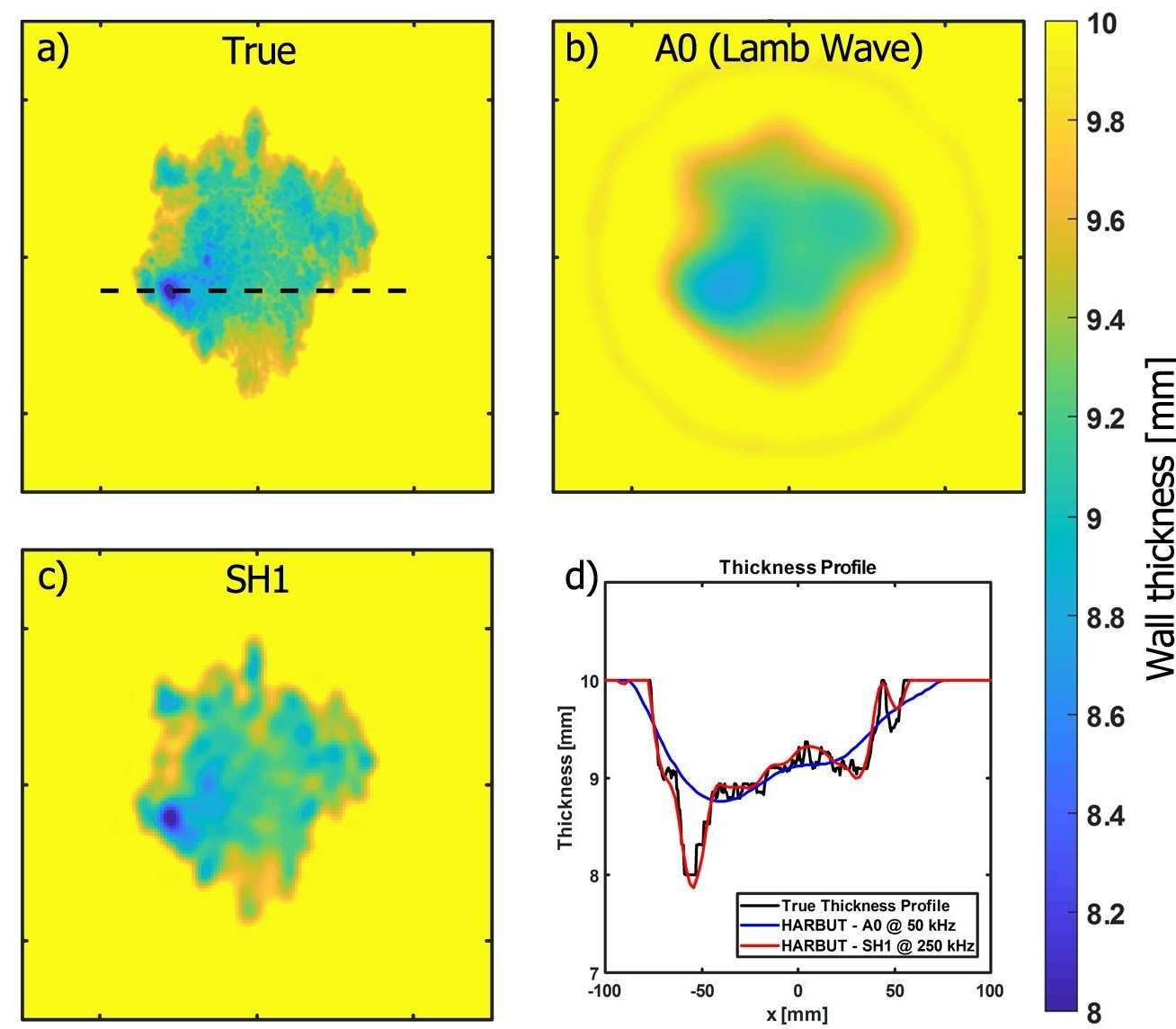Corrosion at pipe supports presents a huge challenge for the petrochemical industry. Measuring the remaining wall thickness is critical for determining the remaining life, but without lifting the pipe, it becomes impossible to access the surface at the point of interest. Guided wave tomography provides a solution to this.
Guided waves are transmitted from an array, beneath the support, and are scattered by the defect. These are then measured by another array of transducers. Tomography algorithms are then used to convert the measured signals into a thickness map.
The Imperial College NDE group has done work in a variety of areas, addressing aspects such as helical paths travelling around the pipes, restricted view imaging, transducer design and performance at supports. Significant progress has been demonstrated in the performance of imaging algorithms, as shown in the figure. HARBUT (Hybrid Algorithm for Robust Breast Ultrasound Tomography) is a hybrid technique developed within the group for high resolution breast imaging; when applied to Lamb wave based guided wave tomography, still suffers from relatively poor resolution despite being a significant improvement over the state-of-the-art ray tomography.
Recent work has focussed on investigating shear-horizontal guided wave modes such as SH1. It was demonstrated that this offers great potential for improving resolution and has been verified numerically as well as experimentally.
